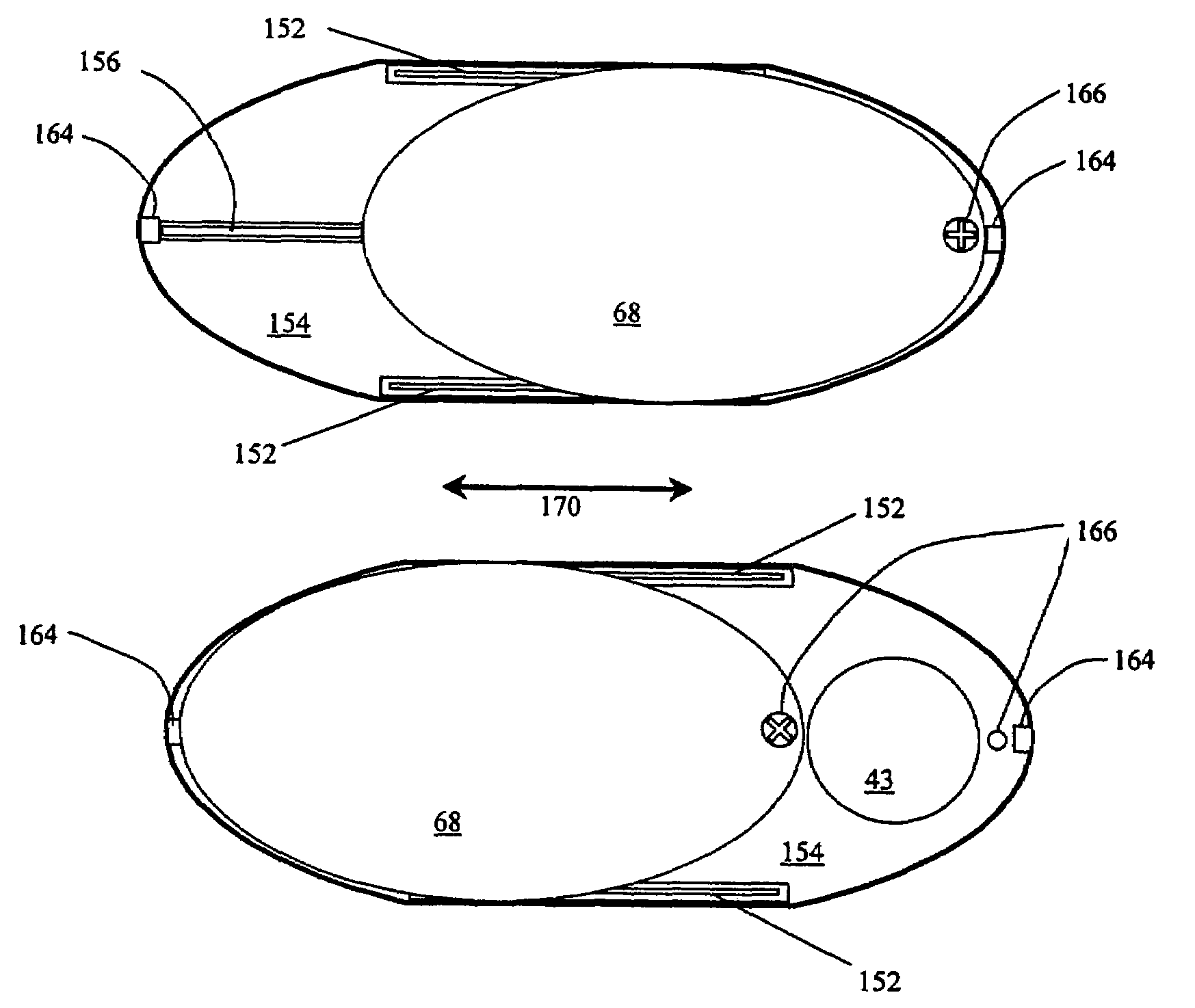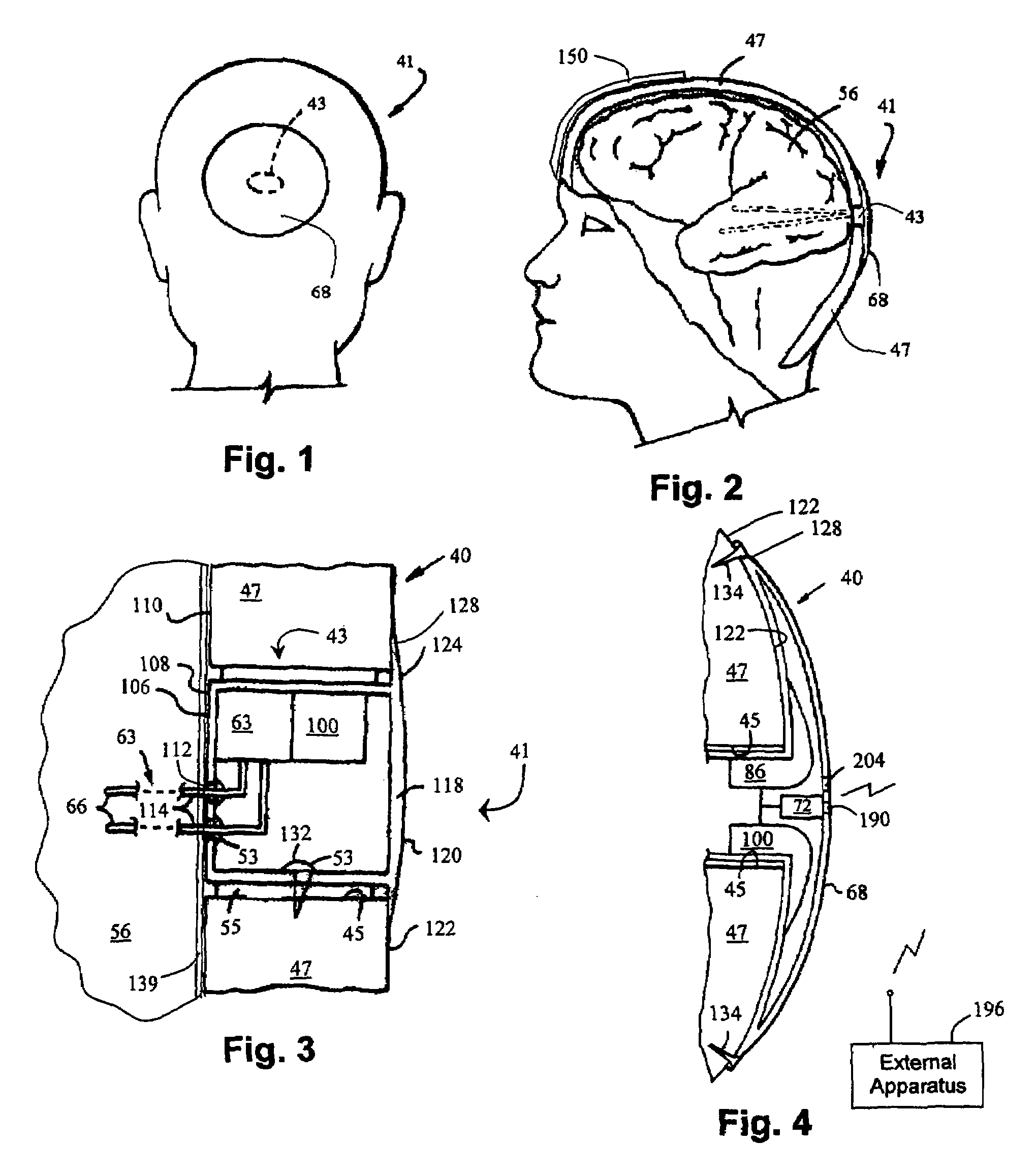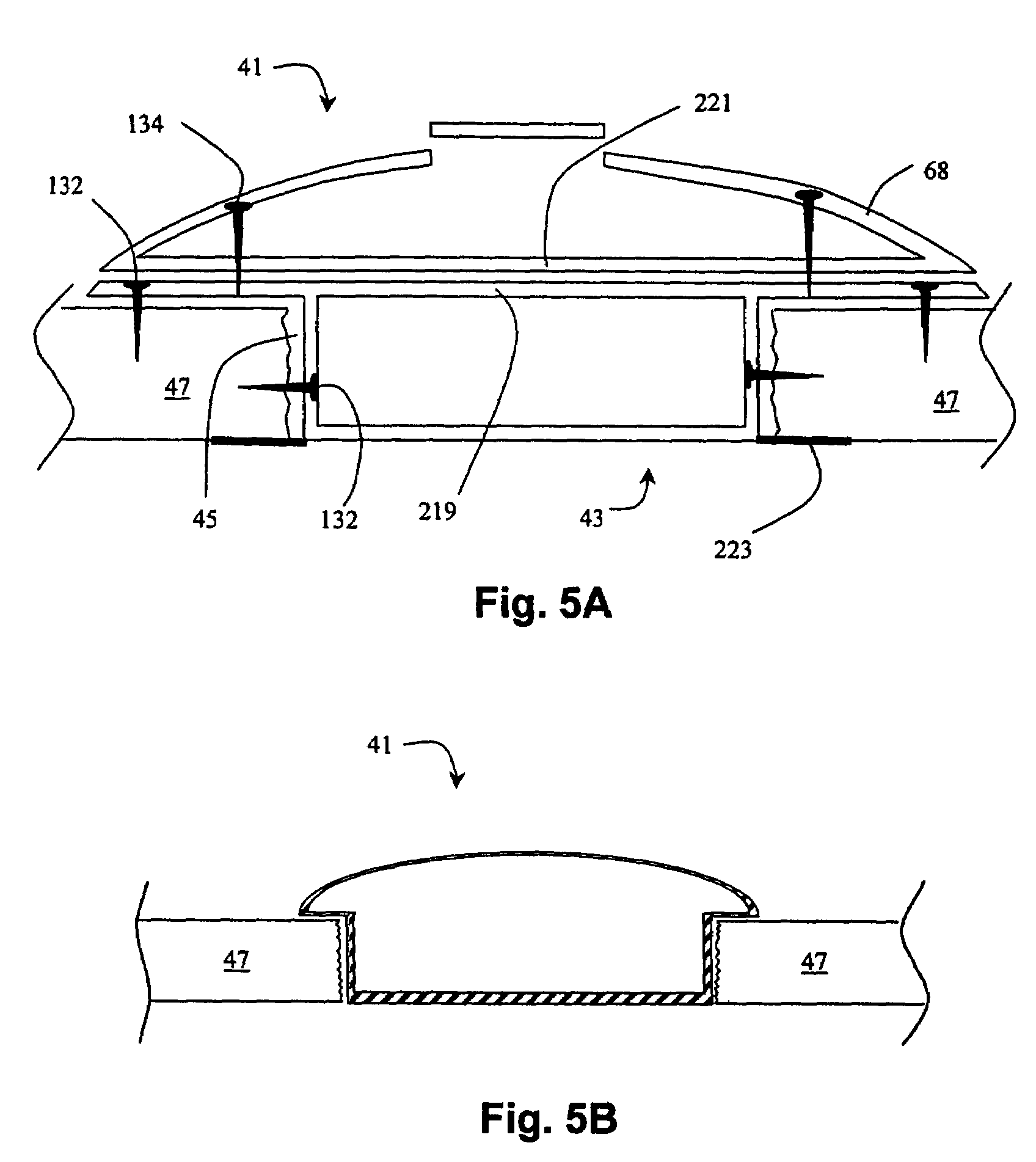Cerebral or organ interface system
a technology of cerebral or organ interface and interface system, applied in the field of neuroprosthes, can solve the problems of reducing efficacy, reducing the effect of device loss on the subject, increasing the fidelity of transmitted signals, etc., and achieves the effects of improving the state of the art, convenient access, and cost-effective and energy-saving
- Summary
- Abstract
- Description
- Claims
- Application Information
AI Technical Summary
Benefits of technology
Problems solved by technology
Method used
Image
Examples
Embodiment Construction
[0070]As required, detailed embodiments of the present invention are disclosed herein; however, it is to be understood that the disclosed embodiments are merely exemplary of the invention, which may be embodied in various forms. Therefore, specific structural and functional details disclosed herein are not to be interpreted as limiting, but merely as a basis for the claims and as a representative basis for teaching one skilled in the art to variously employ the present invention in virtually any appropriately detailed structure.
[0071]A detailed description of a prior art system for the prediction, rapid detection, warning, prevention, and control of changes in activity states in the brain of a subject has been previously disclosed in U.S. Pat. No. 5,995,868, issued Nov. 30, 1999 to Ivan Osorio et al, which disclosure is incorporated herein by reference.
[0072]Changes in cerebral state are highly correlated with changes in level and activity type in other organ systems, heart for exam...
PUM
 Login to View More
Login to View More Abstract
Description
Claims
Application Information
 Login to View More
Login to View More - R&D
- Intellectual Property
- Life Sciences
- Materials
- Tech Scout
- Unparalleled Data Quality
- Higher Quality Content
- 60% Fewer Hallucinations
Browse by: Latest US Patents, China's latest patents, Technical Efficacy Thesaurus, Application Domain, Technology Topic, Popular Technical Reports.
© 2025 PatSnap. All rights reserved.Legal|Privacy policy|Modern Slavery Act Transparency Statement|Sitemap|About US| Contact US: help@patsnap.com



